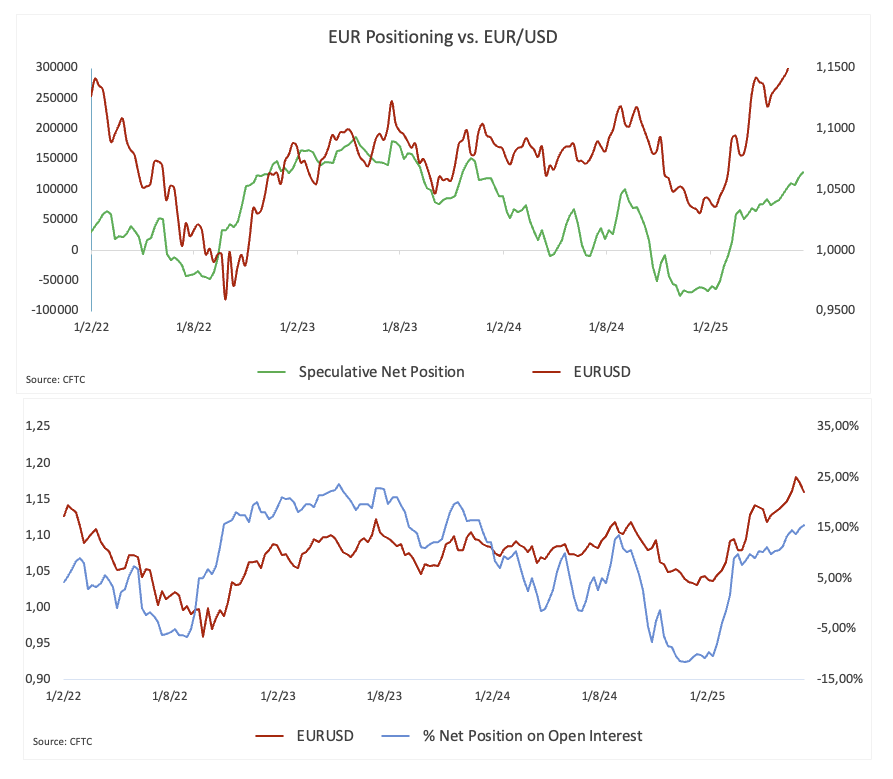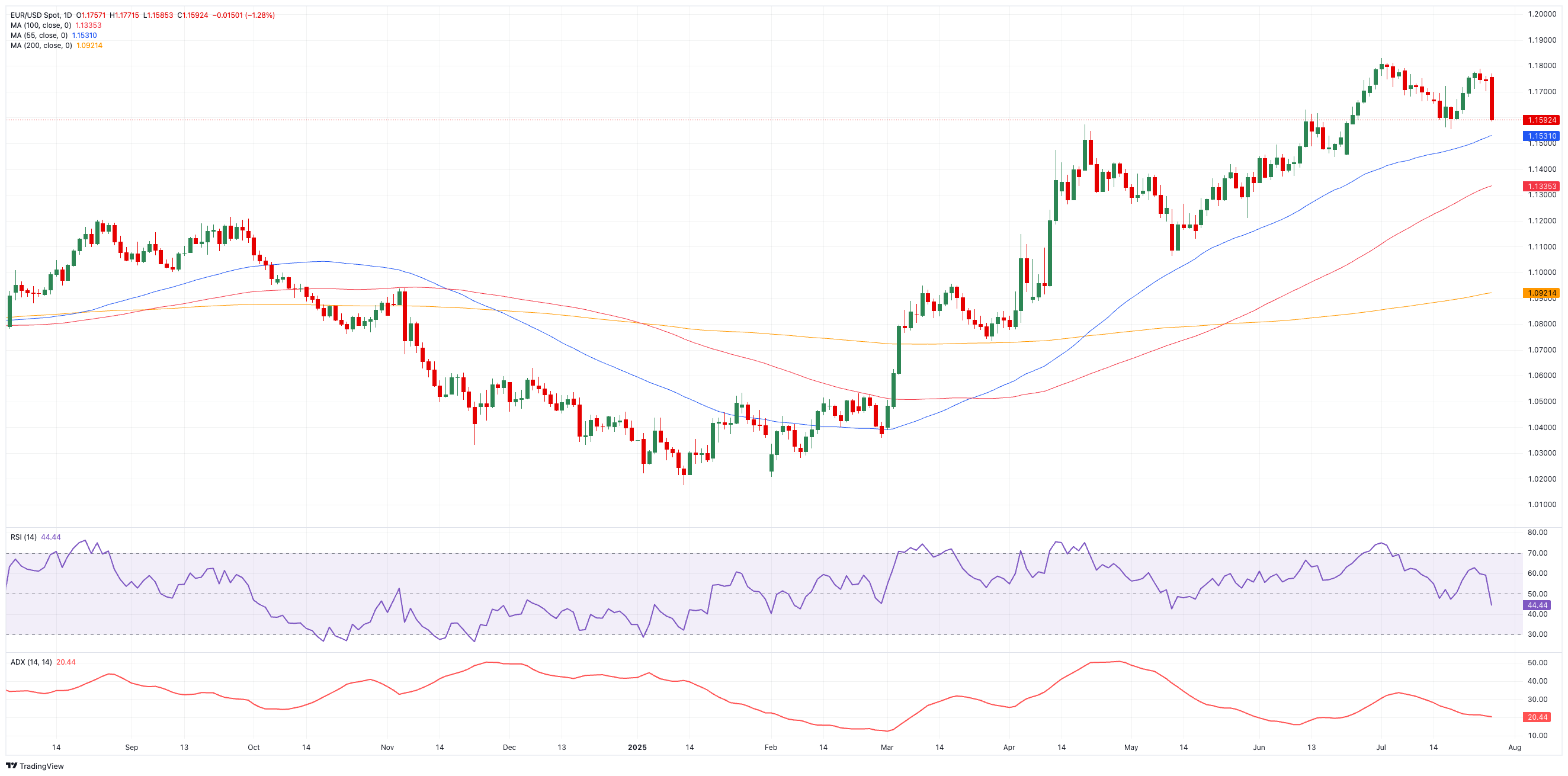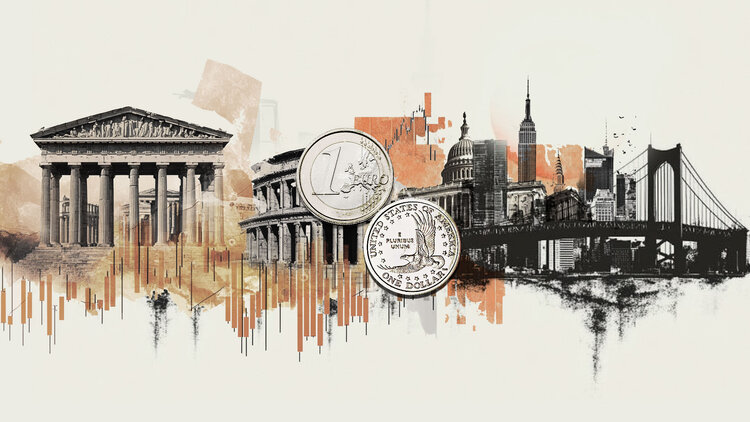- EUR/USD deepened its retracement, breaching below the 1.1600 support.
- The US Dollar picked up strong upside impulse following the US-EU trade deal.
- Focus remains on trade, the upcoming Fed meeting, and key US NFP.
The Euro has accelerated its downward momentum vs. the US Dollar (USD) on Monday, sending EUR/USD south of the 1.1600 support to hit new two-week troughs. The pullback came as the Greenback found its footing again, nudging the Dollar Index (DXY) well north of the 98.00 hurdle.
A Dollar lift on mixed signals and central bank drama
Most of the Dollar’s support came from rising optimism over trade negotiations, particularly in response to the US-EU trade agreement clinched over the weekend.
In fact, both countries have settled on a 15% tariff for most EU exports into the US—up from the 10% rate set in April and a far cry from the 30% levy that had been on the table, but still above the pre‑Trump level of about 1.2%.
In addition, certain industries get a full tariff holiday: think aircraft and parts, semiconductors, chemicals, and key agricultural products will sail in duty‑free.
However, those hefty steel and aluminium duties aren’t budging—US import levies remain at 50%.
In return, the EU has pledged to purchase $750 billion worth of American energy over the coming years, buy “vast amounts” of military kit, and boost its investment in the US by more than $600 billion beyond today’s levels.
The ongoing trade optimism seems to have placed the Fed-White House clash issue on the back burner, albeit momentarily. It is worth recalling that a surprise visit by President Trump to the Federal Reserve last Thursday stirred fresh concerns over central bank independence, just as investors try to parse the Fed’s next move.
Central banks enter the “pause mode”
Minutes from June’s FOMC meeting show a split Committee: some members support preemptive cuts, while others favour waiting to see whether tariff-induced inflation proves sticky. A firmer June CPI reading supports Fed Chair Jerome Powell’s cautious approach, even as futures traders continue to pencil in some easing later this year. At Wednesday’s FOMC event, consensus points to another “hold” by the Committee.
Across the Atlantic, the European Central Bank (ECB) struck a more optimistic tone. Interest rates were left unchanged, and President Christine Lagarde declared the eurozone economy to be in “a good place,” with growth either on track or “a little bit better.” That was enough to make markets rethink their dovish bets—traders who once saw a rate cut this autumn now see only an 80% chance of a move, possibly delayed until next spring.
Speculators go long, commercials go short
Last week saw speculators take a step back on the euro as CFTC data for July 22 shows net long bets sliding to about 125.5K contracts, the weakest in two weeks. At the same time, commercial hedgers trimmed their net shorts to roughly 177.7K contracts, also a two‑week low. Yet overall market engagement remains high: open interest climbed for the fifth straight week, nearing 843.5K contracts.

Technical landscape
EUR/USD faces stiff resistance at the YTD high of 1.1830 (July 1). A break above that could open the door to the September 2021 peak at 1.1909 (September 3), and potentially the symbolic 1.2000 mark.
On the downside, the July low of 1.1556 (July 17) offers near-term support. Below that, the 55-day simple moving average (SMA) at 1.1528 comes into view, followed by the weekly base at 1.1210 (May 29) and the May valley at 1.1064 (May 12).
Momentum remains cautious. The Relative Strength Index (RSI) fell below 45, suggesting room for extra losses, but the Average Directional Index (ADX) sits below 21, pointing to a trend that hasn’t yet found real conviction.
EUR/USD daily chart

The bigger picture
The pair’s recent climb has been more grind than gallop, unfolding in the shadow of unresolved trade tensions and diverging central bank signals. A dovish pivot from the Fed—or signs of a cooling trade war—could push EUR/USD toward fresh highs.
Tariffs FAQs
Tariffs are customs duties levied on certain merchandise imports or a category of products. Tariffs are designed to help local producers and manufacturers be more competitive in the market by providing a price advantage over similar goods that can be imported. Tariffs are widely used as tools of protectionism, along with trade barriers and import quotas.
Although tariffs and taxes both generate government revenue to fund public goods and services, they have several distinctions. Tariffs are prepaid at the port of entry, while taxes are paid at the time of purchase. Taxes are imposed on individual taxpayers and businesses, while tariffs are paid by importers.
There are two schools of thought among economists regarding the usage of tariffs. While some argue that tariffs are necessary to protect domestic industries and address trade imbalances, others see them as a harmful tool that could potentially drive prices higher over the long term and lead to a damaging trade war by encouraging tit-for-tat tariffs.
During the run-up to the presidential election in November 2024, Donald Trump made it clear that he intends to use tariffs to support the US economy and American producers. In 2024, Mexico, China and Canada accounted for 42% of total US imports. In this period, Mexico stood out as the top exporter with $466.6 billion, according to the US Census Bureau. Hence, Trump wants to focus on these three nations when imposing tariffs. He also plans to use the revenue generated through tariffs to lower personal income taxes.





